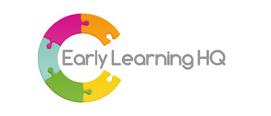Practical Ideas for the New Primary Curriculum
This list provides resources linked to the 2015 ASE workshop Practical Ideas for the New Primary Curriculum, which looked at the new computing curriculum and how to incorporate it into other subject areas.
- ALL
- Teacher guidance
- Poster
- Game
- External link
- Other
Teacher guidance
Computing in the National Curriculum: a Guide for Primary Teachers
Produced by Computing at School, this document provides a comprehensive guide to the new computing curriculum at primary level. It provides an overview of expectations at KS1 and KS2, subject knowledge, planning, resourcing and assessment.
Poster
Computing key word posters
This resource contains ten posters which explain key words in the primary computing curriculum.
‘Al-the-gorilla’ explains what each key word means in a fun and informative way. The key words described are algorithm, debug, input, output, process, program, repetition, selection and sequence.
Game
The Gingerbread Man Bee Bot Cards
Aimed at early years and lower primary this resource supports the learning of basic programming. It contains a set of flashcards based on characters and scenes from The Gingerbread Man. These cards are 15x15cm and so are ideal for using with a Beebot programmable robot (as this is the distance that the Beebot robot travels during each movement).
External link
ASE Powerpoint
A powerpoint of the session used at ASE 2015, it includes the ideas generated during group discussion.
Other
Computer Science Unplugged
A collection of twenty activities to aid the teaching and learning of computer science through engaging games and puzzles using cards, string, crayons and lots of running around. Aimed originally at upper primary and lower secondary school aged students it could be adapted for use with other age groups.
The Card Flip Magic resource uses a magic trick to show how to detect when data has been corrupted, and how to correct it.
Battleships-Searching Algorithms using the game battleshiops to demonstrates three different search methods: linear searching, binary searching and hashing. That computers use to find information in large collections of data. It includes extension activities and resource materials for use when playing the games.




